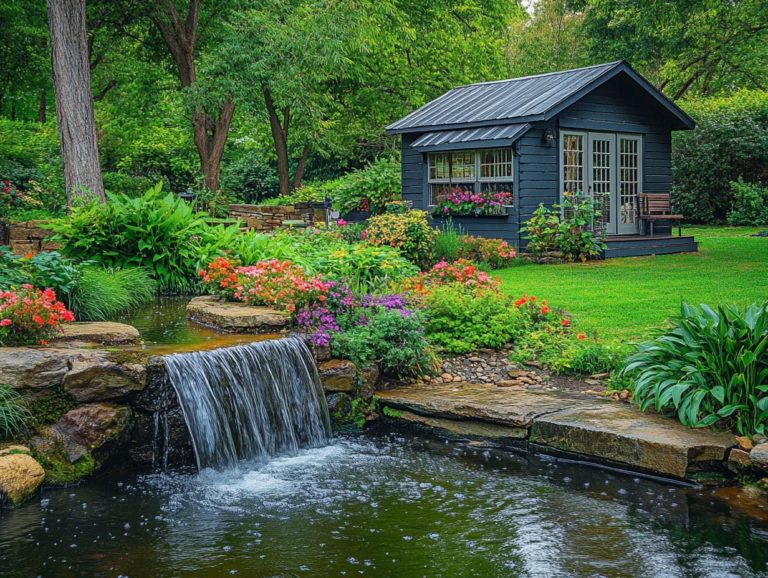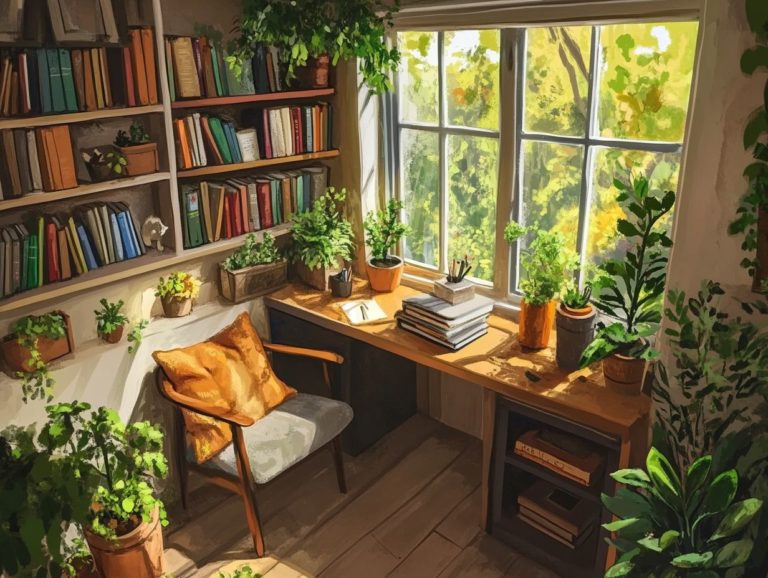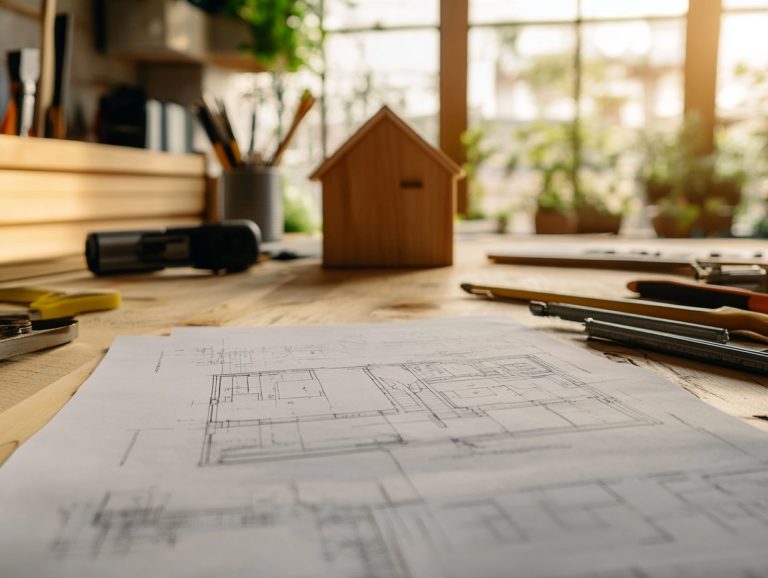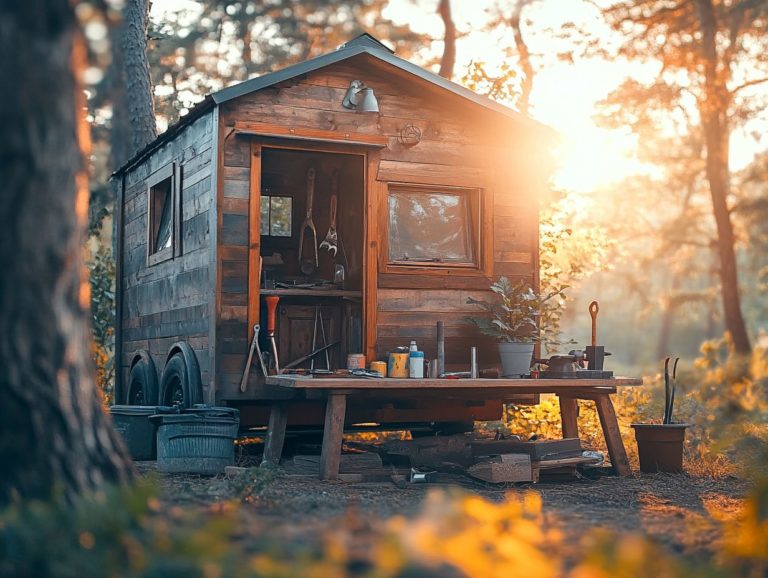Customizing Your Tiny House with DIY Options
Tiny houses have captivated the imagination of many, presenting a minimalist lifestyle that emphasizes simplicity and sustainability. If you re thinking about embracing this trend, customizing your tiny house can transform it into a personalized sanctuary that showcases your unique style.
This article delves into various DIY options for designing and organizing your space, enhancing energy efficiency, and the advantages of tackling these projects yourself.
Get ready for some fantastic insights on what to consider before embarking on your DIY journey, along with a wealth of inspiring ideas to kickstart your creative process.
Dive in and discover how you can craft a tiny house that s truly a reflection of you!
Contents [hide]
Key Takeaways:
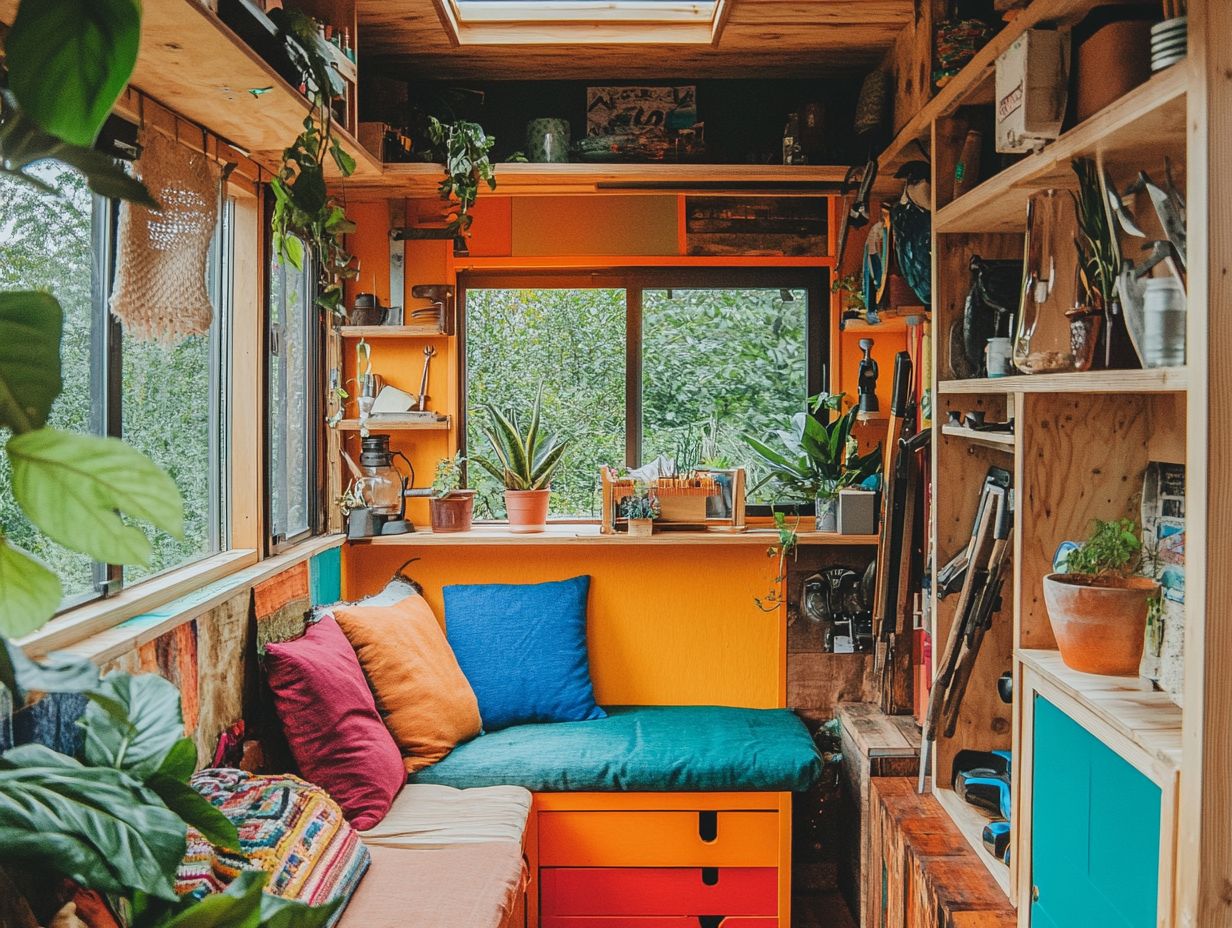
- Design and layout are key elements to consider when customizing a tiny house. DIY options allow for personalization and flexibility to create a space that fits your needs.
- DIY customization can save costs and add a unique touch to your tiny house. However, it’s important to carefully plan and consider budget, time constraints, and necessary skills and tools before starting any projects.
- Get inspiration and ideas for your tiny house customization from online resources and communities. There are many creative DIY projects that can help maximize space, increase storage, and improve energy efficiency in your tiny house.
What is a Tiny House?
A tiny house represents small homes designed to make the most of space while minimizing environmental impact. These charming homes usually range from 100 to 400 square feet and include essential features like custom kitchens that suit your style and needs, and bathrooms.
As an increasingly popular option for affordable housing, tiny homes appeal to those eager to downsize, simplify their lives, and fully embrace the tiny house community. This movement champions space-efficient living and fosters a sense of camaraderie among tiny house enthusiasts.
Various types of tiny homes have emerged, including custom and prefab structures that streamline the building process and utilize eco-friendly materials. Builders like Fritz Tiny Homes and Ben Rawson are leading the charge with their unique designs, proving that oddly shaped and creatively styled homes can comfortably fit into a smaller footprint without sacrificing any of the comforts you cherish. If you’re interested in maximizing your space, check out this guide on how to build custom tiny house cabinets.
Navigating the legal landscape can be a bit tricky, as rules about where you can place your home and construction rules vary significantly from one region to another. As this movement continues to flourish, it not only promotes affordable housing but also enriches communities by promoting sustainable living and fostering neighborly connections.
DIY Options for Customizing Your Tiny House
Embracing DIY options for customizing your tiny house enables you to craft personalized spaces that genuinely reflect your unique style, preferences, and needs. Whether you’re contemplating building a tiny home from the ground up or customizing a prefab version, an abundance of opportunities awaits to elevate both functionality and aesthetics.
From choosing premium materials for your flooring to designing bespoke kitchens and bathrooms, the potential for DIY customization is virtually limitless. Exploring unique flooring options for tiny houses can add a personal touch to your space. Engaging in these projects not only reduces costs but also nurtures your creativity and fosters a sense of ownership in your tiny house journey.
Design and Layout
Design and layout play pivotal roles in maximizing the functionality of tiny homes. They ensure you utilize every square foot to its fullest potential while embracing the principles of compact living.
Thoughtful planning can yield a harmonious balance between aesthetics and practicality, making your space feel more expansive than it truly is. Custom floor plans can feature furniture that serves multiple purposes and innovative storage solutions, allowing you to savor the comfort of your space without compromising on style. Engaging in these projects reduces costs and nurtures creativity, fostering a sense of ownership in your DIY tiny home journey.
Embracing open floor plans creates an inviting atmosphere where your living and dining areas seamlessly blend, fostering a sense of community among residents in tiny house neighborhoods. Vertical storage options, such as shelves that reach the ceiling and under-bed compartments, can significantly optimize functionality without overwhelming the space.
Think about exciting design options, like fold-out tables or convertible sofas, which demonstrate how design choices can elevate your everyday living experience. These strategies not only enhance your individual comfort but also promote communal bonding in tight-knit tiny house communities, making efficient use of shared spaces.
Storage Solutions
Storage solutions are essential in tiny homes, allowing you to maintain an organized, clutter-free space despite the limitations. Effective storage strategies can transform your tiny house into a functional haven, exemplifying the art of space-efficient living. By utilizing vertical spaces, hidden compartments, and custom cabinetry, you can maximize storage in your DIY tiny home while still creating an inviting atmosphere.
Consider creative design choices, like shelving that extends all the way to the ceiling, to fully capitalize on your vertical space. Under-bed compartments offer a clever way to hide away seasonal items or those less-used possessions, ensuring that every inch is utilized effectively.
Tiny house builders often showcase these innovative designs, demonstrating how furniture that serves multiple purposes—like beds with pullout drawers or benches that double as storage—can make daily living seamless. By embracing these strategies and incorporating smart home tech into DIY tiny houses, you can enhance your living experience and express your personal style through smart, stylish storage solutions.
Energy Efficiency
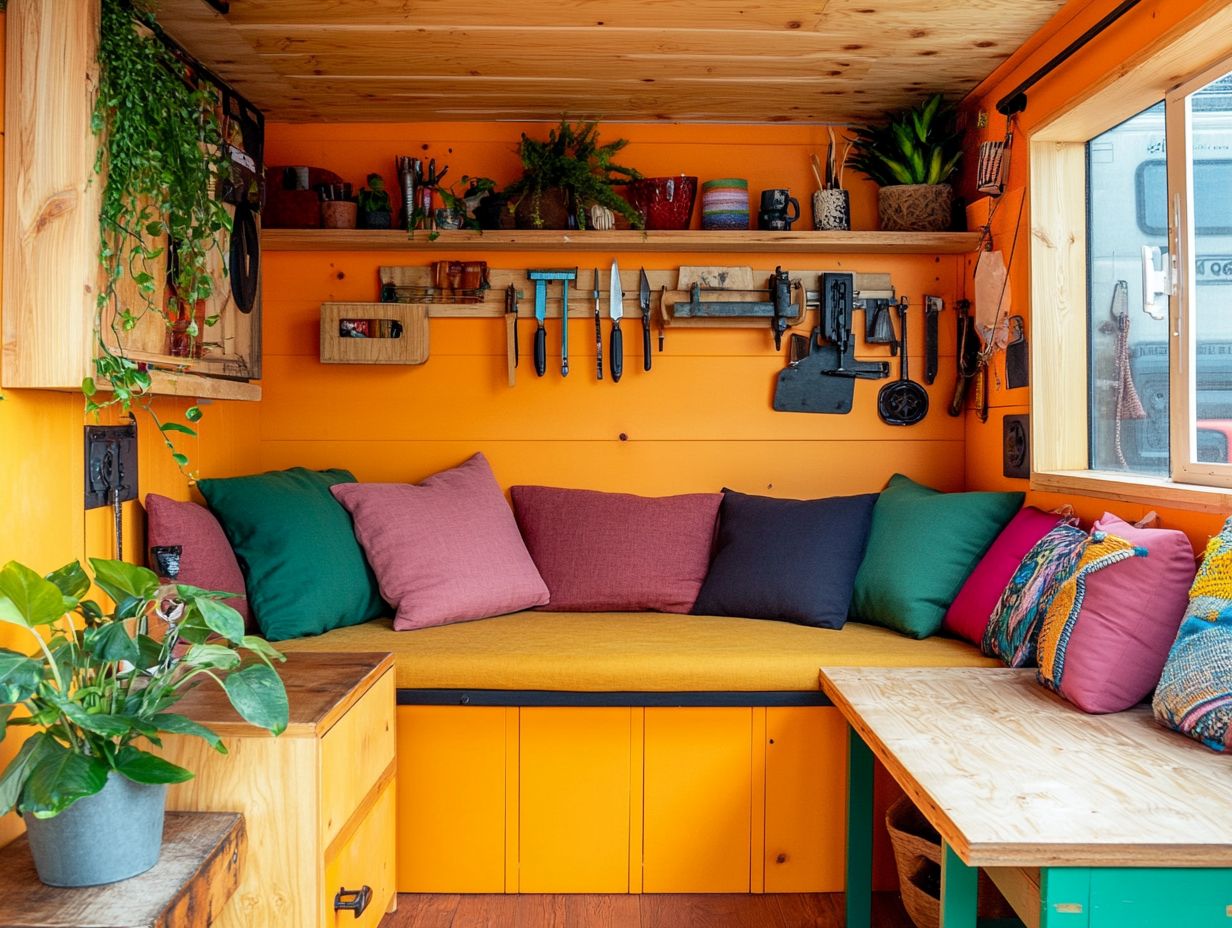
Energy efficiency is an essential aspect for you as a tiny house builder or owner, significantly enhancing sustainability while slashing those utility costs. By incorporating good insulation, energy recovery ventilators devices that help save energy by reusing heat and solar panels, you can elevate your tiny home s energy efficiency, allowing you to live comfortably without leaving a hefty environmental footprint. By prioritizing energy-efficient design, your tiny home exemplifies sustainable living.
Select sustainable materials for your construction, like reclaimed wood or recycled steel, not only minimizes waste but also cultivates a healthier indoor atmosphere. This mindful approach means you can relish the perks of lower heating and cooling bills while playing your part in building a more sustainable future.
Take, for example, homes like the Tiny Solar House ; they showcase how effective solar installations can power various appliances with clean energy, ensuring long-term savings and a reduced carbon footprint.
Implement these strategies and enjoy a comfortable, eco-friendly tiny home that inspires others to follow suit.
Benefits of DIY Customization
The benefits of DIY customization in tiny homes go well beyond just aesthetics. They present you with a unique opportunity for significant cost savings and a high degree of personalization.
By actively engaging in the design and building process, you can tailor every element of your tiny house to suit your specific needs and preferences. This includes everything from flooring selections to custom outdoor areas.
This hands-on approach not only cultivates a profound sense of ownership but also enables you to craft a living environment that truly reflects your personal values and lifestyle choices.
Cost Savings
Cost savings are a major perk when you choose to go the DIY route for your tiny home. This makes affordable housing much more accessible for you and your family as you look to cut down on living expenses.
By taking charge of the building process, you gain control over your budget and can make informed decisions about materials, labor, and design elements. This hands-on approach helps trim those tiny house costs, making it a financially viable option for many individuals and families.
Selecting sustainable, high-quality materials like reclaimed wood not only minimizes waste but also creates a healthier indoor environment. This will boost the longevity of your home.
Thoroughly researching various budgeting strategies can significantly reduce your expenses. For example, sourcing salvaged materials or hunting for sales is beneficial. Managing construction on your own also helps lower labor costs, as hiring skilled tradespeople can be quite pricey.
Dive into community workshops or online tutorials to gain invaluable insights. This enables you to tackle everything from plumbing to insulation.
Engaging with these resources not only helps you build a supportive network but also enhances your skill set. This ensures you have what it takes for a successful build. It s this comprehensive approach to DIY tiny home construction that allows you to unleash your creativity while keeping a close eye on your finances.
Personalization
Personalization stands as one of the most enriching aspects of crafting your DIY tiny home. It allows you to weave your style and values into every nook and cranny of your living space.
From selecting custom floor plans to integrating unique design elements, the personalization process elevates a standard tiny house into a distinctive sanctuary that mirrors your individual tastes and lifestyle. To learn more about optimizing your space, explore how to create a multi-functional tiny house. This depth of customization fosters a profound connection with your home, enhancing your overall living experience.
You have the opportunity to choose custom kitchens that showcase innovative storage solutions and handcrafted cabinetry. This turns mealtime in a small space into not just a necessity, but an enjoyable experience.
In terms of bathrooms, envision bespoke tile designs, compact fixtures, and creative lighting. These elements can elevate the space, ensuring it remains both luxurious and practical.
Transform your outdoor areas with creative landscaping and unique furniture designs. This creates tranquil settings for entertaining or enjoying solitude. Ultimately, this entire tiny home project becomes a canvas for your self-expression and ingenuity.
Considerations Before Starting DIY Projects
Before starting your DIY project, ensure you’re prepared. Take action now to set yourself up for success!
First and foremost, establishing a clear budget is essential. This will guide your choices regarding materials, labor, and the overall scope of your project.
Take time to assess the tools and skills needed for your tasks. This evaluation will help you decide whether to tackle the work yourself or bring in professional assistance.
And don t forget to stay informed about local planning department regulations and zoning laws. Compliance is key to a seamless process.
Budget and Time Constraints
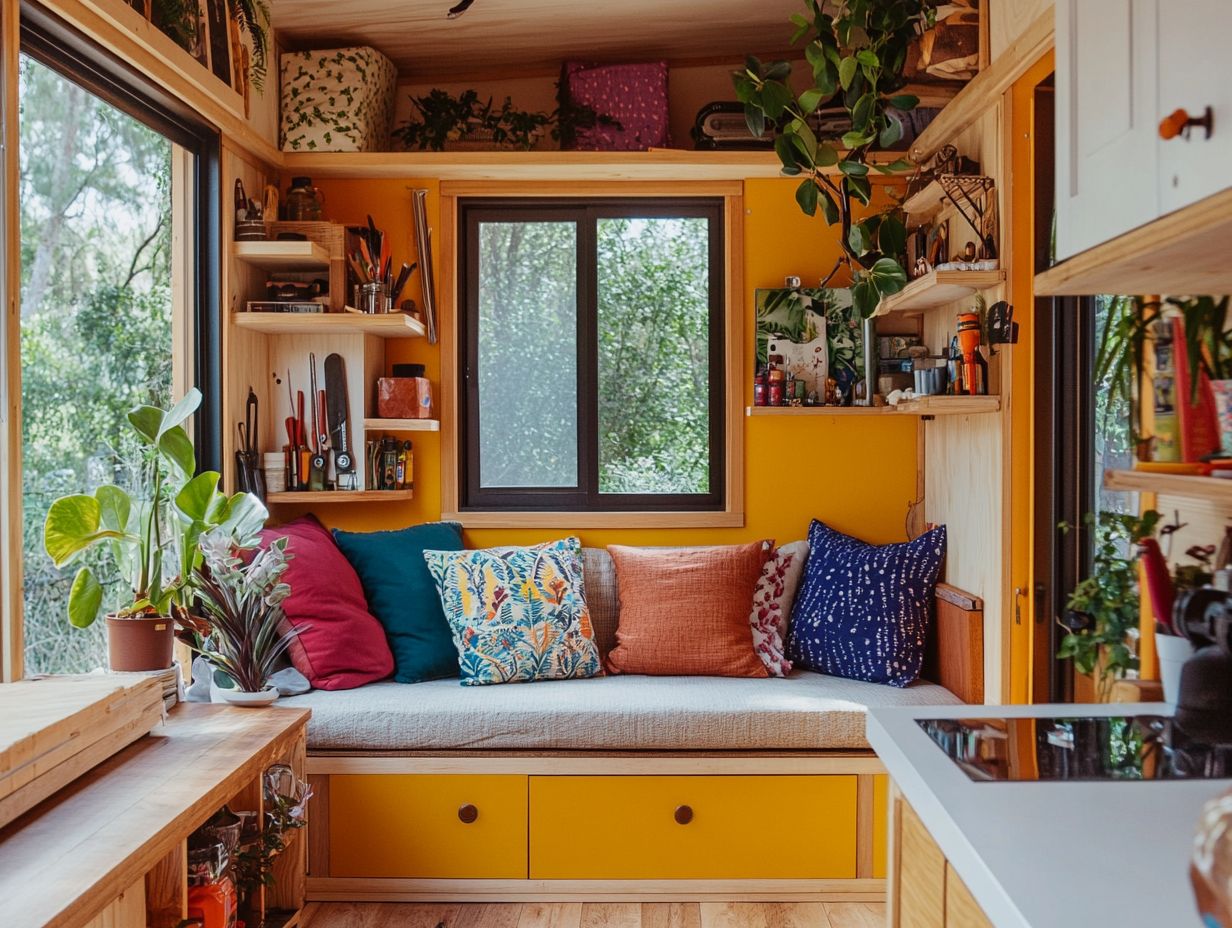
Establishing a budget and time constraints is crucial when you re planning DIY projects for your tiny house. It ensures your endeavor remains feasible and efficient.
A well-defined budget enables you to make informed decisions about materials, tools, and labor. It also accommodates any unexpected expenses that may arise during the construction process.
Time management is just as vital. Effective planning paves the way for a smoother workflow and minimizes delays in completing your tiny home.
By prioritizing clear financial goals and crafting a detailed timeline, you can track progress easily. Flexibility is essential; being open to alternative materials can help keep costs down.
Regularly reviewing both your budget and schedule allows for necessary adjustments. This approach reduces stress and cultivates resourcefulness. You can achieve your tiny home vision without overspending or extending your timeline.
Tools and Skills Required
Equipping yourself with the right tools and skills is essential for tackling DIY projects in tiny homes. This ensures that each task is completed efficiently.
Understanding the basics of plumbing, electrical work, and construction significantly enhances your ability to create a safe living space. For instance, knowing plumbing basics allows you to install sinks and water lines effectively.
By mastering these areas, you equip your home with necessary features. You also cultivate a profound sense of accomplishment on your journey.
Inspiration and Ideas for Tiny House Customization
Finding inspiration for customizing your tiny house can be an exhilarating journey. It’s filled with resources and inventive DIY projects tailored to various lifestyles.
The tiny house community is a treasure trove of innovative designs. These are frequently shared across online platforms, blogs, and forums.
Online Resources and Communities
Online resources and communities are essential for finding inspiration in your tiny house customization journey. They connect you with invaluable information and fellow enthusiasts.
On platforms like The Tiny Life and Tiny House Talk, you ll find various Facebook groups dedicated to tiny living. These forums allow you to share your designs and challenges.
As you engage in discussions about zoning laws, construction techniques, and space-saving solutions, you contribute to a collective wisdom that propels the tiny house movement forward. Don’t forget video-sharing platforms like YouTube, where you can explore countless channels showcasing tiny house tours, DIY projects, and the benefits of custom tiny house designs. This wealth of resources truly enriches your experience and support within this vibrant community.
Examples of Creative DIY Projects
Looking for inspiration for your tiny home? Creative DIY projects offer amazing ways to maximize space and add functionality!
Innovations in custom tiny homes have led to unique storage solutions, multi-functional furniture, and custom designs that cater specifically to your needs. These projects highlight the versatility of tiny house living and demonstrate the remarkable creativity and resourcefulness within the tiny house community.
Consider how many enthusiasts have transformed their living areas by integrating foldable tables and hidden beds. These additions allow rooms to serve multiple purposes without sacrificing comfort. Sustainable materials like reclaimed wood and upcycled furniture have gained popularity, reflecting a strong commitment to living in a way that is good for the environment.
Projects such as repurposed shipping containers or tiny homes built on trailers illustrate innovative designs that challenge traditional notions of housing. These creative endeavors enrich your personal space and contribute to a burgeoning movement advocating for minimalism and sustainability.
They foster collaboration among DIY enthusiasts and inspire new ideas throughout the tiny house community. Don’t miss out on the chance to customize your tiny home!
Frequently Asked Questions
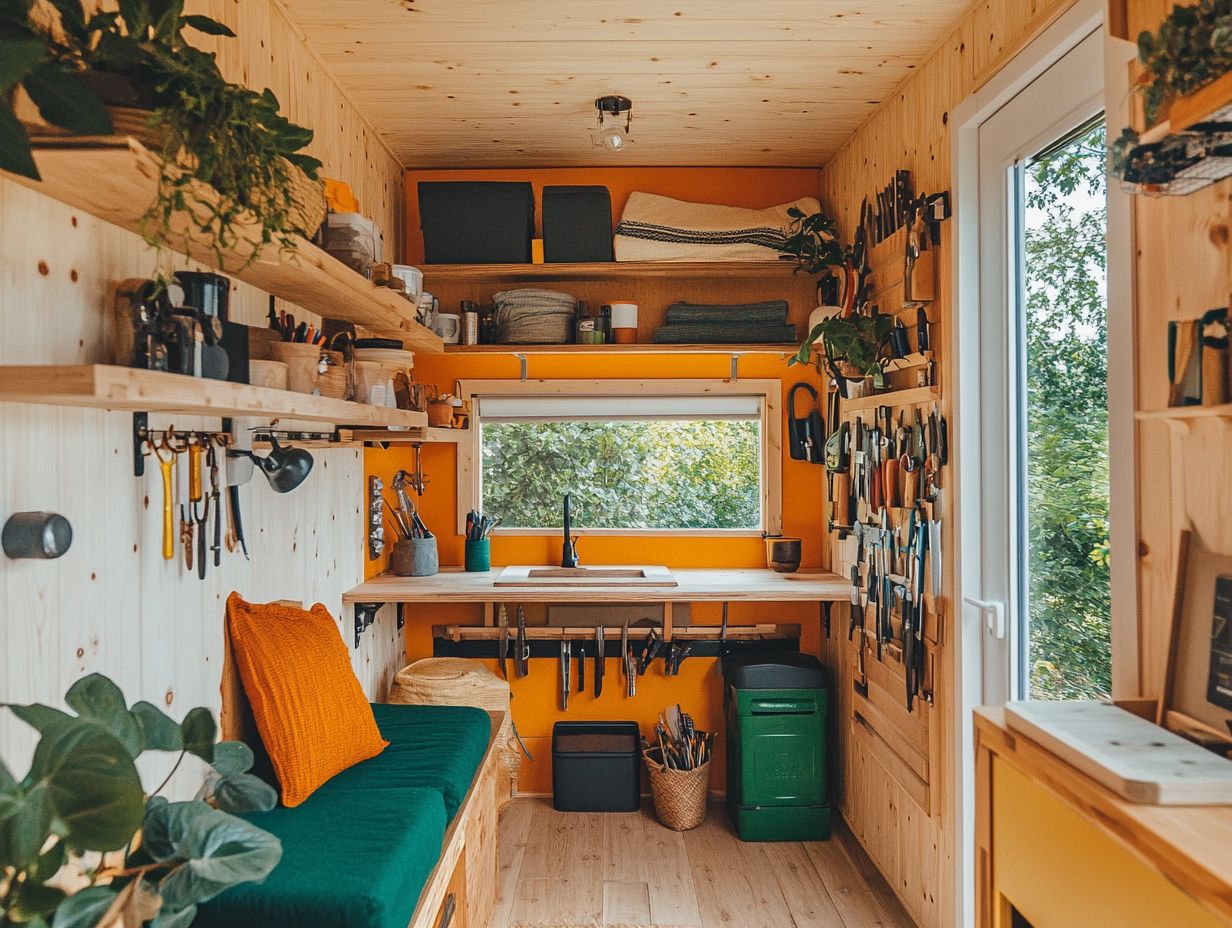
-
Can I customize my tiny house with DIY options?
Yes! You can customize your tiny house with DIY options that let you add unique and personalized touches without breaking the bank.
-
What are some popular DIY options for customizing my tiny house?
Some popular DIY options include building your own furniture, installing custom storage solutions, and creating unique decor pieces.
-
Do I need to have experience in DIY projects to customize my tiny house?
No, you don t need extensive experience! There are plenty of beginner-friendly options and tutorials available online to guide you through the customization process.
-
How can I incorporate sustainable and eco-friendly options into my tiny house customizations?
You can use recycled materials, install energy-efficient appliances, and even add solar panels to your tiny house.
-
What are the benefits of customizing my tiny house with DIY options?
Customizing your tiny house allows you to save money, express your creativity, and add unique touches that reflect your personality and lifestyle.
-
Are there any limitations to customizing my tiny house with DIY options?
While there are many options, consider your skill level and the safety of any modifications. It’s always best to consult with a professional if you’re unsure about a particular project.
Ready to customize your tiny home? Dive into the DIY world today!

